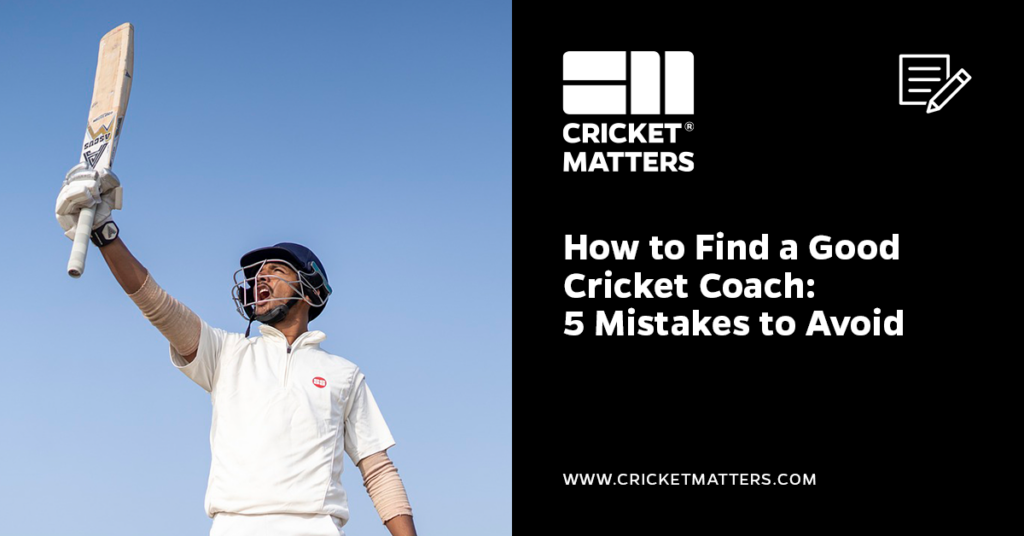What’s a Good Batting Average in Club Cricket?
Every club cricketer asks it. Most won’t admit it.
You check the league stats. Scroll through your numbers. Then quietly wonder: “Is this good?”
Maybe your average is 22. Maybe it’s 38. Maybe you’ve had a few 50s but no hundreds. And the real question under all that is this:
“Am I a good player… or just getting by?”
Here’s the truth no one tells you: Even the best in the world fail 6 or 7 times out of every 10 innings.
This isn’t about chasing perfection. It’s about understanding your role, knowing the right benchmarks, and learning how to measure performance like a pro.
In this post, we’ll break it down.
- How often the greats succeed (and fail)
- What “good” looks like for openers, number 3s, 4s, and 5s
- And how your stats stack up against realistic, role-specific standards
If you’ve been judging yourself by the wrong yardstick, this will change how you look at your season.
Credit where it’s due—Batting performance specialist Gio Colussi first introduced me to some of these ideas, and they’ve shaped how I now break down performance and progression. Thanks Gio!
Table of Contents
What the Greats Really Achieve — Test, ODI, and T20
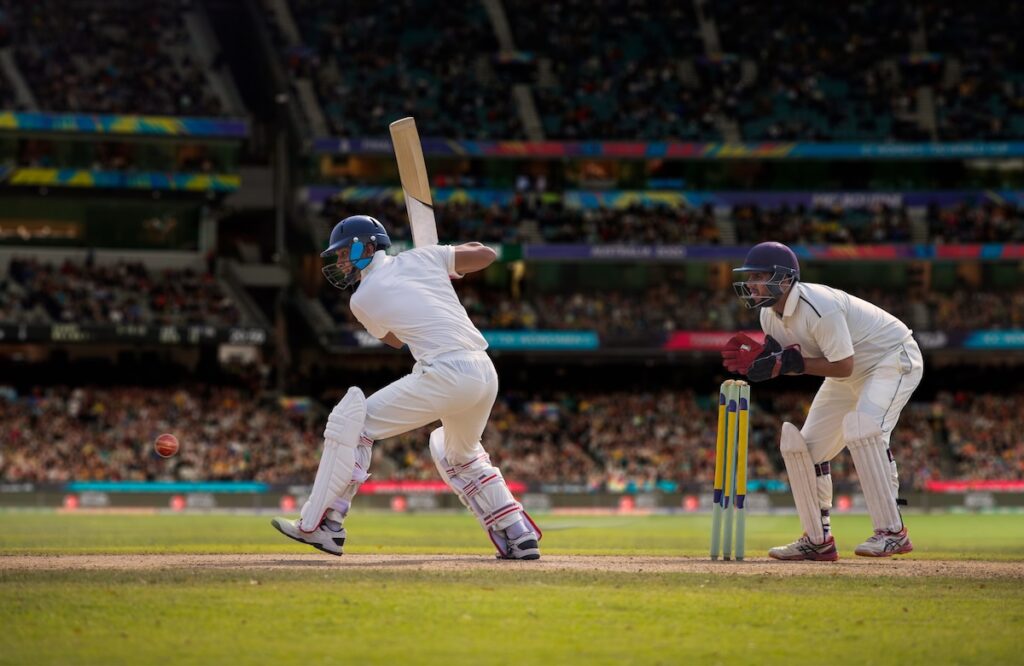
When players talk about greatness, they talk about averages. But averages don’t tell the full story.
What separates elite batters from everyone else isn’t how many runs they’ve scored — it’s how often they turn up when it counts.
- How often do they pass fifty?
- How often do they go on to a hundred?
- And how often they fail — and bounce back without drama.
It’s time to stop obsessing over one number and start looking at the pattern.
How Often Do Elite Players Succeed?
Let’s be blunt: cricket is a game of failure.
Even the greatest players in history — Tendulkar, Ponting, Root, Kohli — fail more often than they succeed.
Most people are aware of this in theory, but they don’t truly understand what it looks like in numbers.
Look closely, and a pattern emerges.
The very best batters in the world score 50 or more in just 3 to 4 innings out of every 10. That’s it.
They’re not scoring runs every time they walk out — but when they do get in, they make it count.
They don’t chase perfection. They chase consistency. They chase conversion.
And that’s the difference. They know they’ll fail. But they know how often is too often. They track the trend.
This is where most club cricketers lose the plot.
They get three ducks in a row and spiral. Confidence disappears. The hands go soft. They stop watching the ball.
But the greats? They’ve seen this before. They zoom out. They look at form across 10 innings, 20 innings, and 50 innings.
They measure the pattern, not the panic.
So, before we even talk about what you should be aiming for, let’s take a look at how the greats stack up across each format, not by average alone, but by how often they truly deliver.
Because once you understand that, you’ll stop chasing the wrong numbers — and start focusing on the ones that actually matter.
Test Cricket Batting Averages

Test cricket is brutal. Conditions vary, bowlers are relentless, and mistakes get punished.
That’s why it’s so telling to look not just at who’s scored the most runs — but how often they deliver real impact: fifties, hundreds, match-defining innings.
Let’s break it down.
Top 10 Test Batters of All Time (by Runs 2025)
| Player | Innings | Runs | Average | 50+ per 10 inns | 100s per 10 inns | % Innings 50+ |
|---|---|---|---|---|---|---|
| Sachin Tendulkar | 329 | 15,921 | 53.78 | 3.62 | 1.55 | 36.2% |
| Ricky Ponting | 287 | 13,378 | 51.85 | 3.59 | 1.43 | 35.9% |
| Jacques Kallis | 280 | 13,289 | 55.37 | 3.68 | 1.61 | 36.8% |
| Rahul Dravid | 286 | 13,288 | 52.31 | 3.46 | 1.26 | 34.6% |
| Joe Root** | 281 | 13,087 | 50.92 | 3.63 | 1.28 | 36.3% |
| Alastair Cook | 291 | 12,472 | 45.35 | 3.09 | 1.13 | 30.9% |
| Kumar Sangakkara | 233 | 12,400 | 57.40 | 3.85 | 1.63 | 38.4% |
| Brian Lara | 232 | 11,953 | 52.88 | 3.53 | 1.47 | 35.3% |
| Shivnarine Chanderpaul | 280 | 11,867 | 51.37 | 3.43 | 1.07 | 34.3% |
| Allan Border | 265 | 11,174 | 50.56 | 3.40 | 1.02 | 34.0% |
Look closely at the table and you’ll see Joe Root is still right up there with the greats.
While most legends are landing fifty-plus scores around 3.4 to 3.7 times every 10 innings, Root holds his own at 3.63, with a Test average over 50 and more than 13,000 runs.
But let’s not forget Kumar Sangakkara — often overlooked, yet one of the most consistent performers of all time.
Sangakkara leads the pack with 3.85 fifty-plus scores per 10 innings and the highest percentage of 50+ innings (38.4%) among this elite group.
He combined flair with relentless output — and like Root, was remarkably consistent over time.
So if you’re looking for modern benchmarks of elite-level consistency, you could argue that Root and Sangakkara set the gold standard.
And here’s the deeper lesson…
Even among the all-time greats, the average lands around 3.5 fifty-plus scores per 10 innings.
They’re not flawless. They’re just unshakably consistent.
That’s the real takeaway for any club cricketer: Stop chasing perfection. Start chasing the pattern.
ODI Cricket Batting Averages
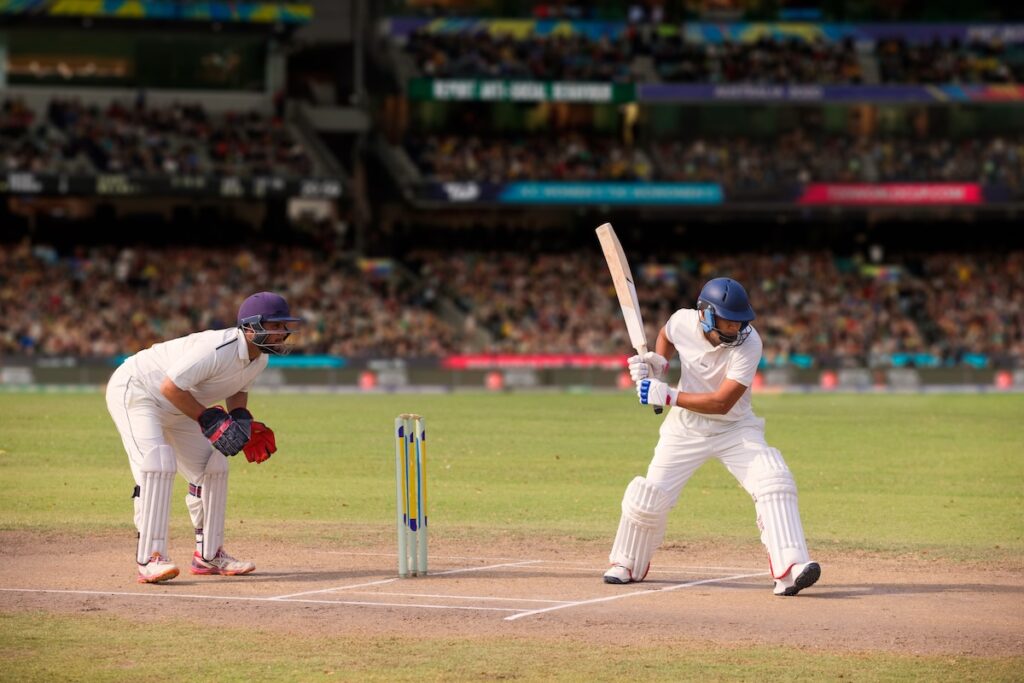
One-day cricket is a different beast.
The game moves faster. The margin for error is smaller. You’ve got 50 overs to make it count—and usually far fewer balls to face.
Yet, the best still find ways to deliver… over and over again.
Let’s look at the ten highest run-scorers in ODI history. Again, we’re not just judging them by raw runs, but by how frequently they scored 50 or more.
Top 10 ODI Batters of All Time (by Runs 2025)
| Player | Innings | Runs | Average | 50+ per 10 inns | 100s per 10 inns | % Innings 50+ |
|---|---|---|---|---|---|---|
| Sachin Tendulkar | 452 | 18,426 | 44.83 | 3.21 | 1.08 | 32.1% |
| Kumar Sangakkara | 380 | 14,234 | 41.98 | 3.11 | 0.66 | 31.1% |
| Virat Kohli | 290 | 14,181 | 57.88 | 4.31 | 1.76 | 43.1% |
| Ricky Ponting | 365 | 13,704 | 42.03 | 3.23 | 0.82 | 32.3% |
| Sanath Jayasuriya | 433 | 13,430 | 32.36 | 2.20 | 0.65 | 22.0% |
| Mahela Jayawardene | 418 | 12,650 | 33.37 | 2.29 | 0.45 | 22.9% |
| Inzamam-ul-Haq | 350 | 11,739 | 39.52 | 2.66 | 0.29 | 26.6% |
| Jacques Kallis | 314 | 11,579 | 44.36 | 3.27 | 0.54 | 32.7% |
| Sourav Ganguly | 300 | 11,363 | 41.02 | 3.13 | 0.73 | 31.3% |
| Rohit Sharma | 273 | 11,168¹ | 48.76¹ | 3.30¹ | 1.17¹ | 33.0%¹ |
Now here’s the outlier:
Virat Kohli isn’t just leading the list — he’s redefining the standard. He passes fifty in 43% of his ODI innings. That’s nearly one in every two matches.
His century rate? 1.76 per 10 innings.
That’s more than double what most legends on this list achieved.
And he’s done it with an average of 57.88 across 290 innings — not in bursts, but across a sustained, world-class career.
Kohli isn’t just consistent — he’s clinical.
- He builds when it’s tough.
- He finishes when it matters.
- And he does it under pressure, time after time.
This isn’t form. This is control.
Compare that to the rest of the greats — Tendulkar, Sangakkara, Ponting — who hover around 3 to 3.2 fifties per 10 innings. That’s still elite.
But Kohli’s numbers? They’re not just excellent. They’re rare.
The lesson for club players? You don’t need to average 57.
But if you’re scoring 50+ every 3 or 4 innings, and converting some into hundreds —You’re doing your job.
Like in Tests, white-ball cricket isn’t about chasing one golden knock. It’s about showing up again and again — and turning starts into something that wins matches.
International T20 Batting Averages
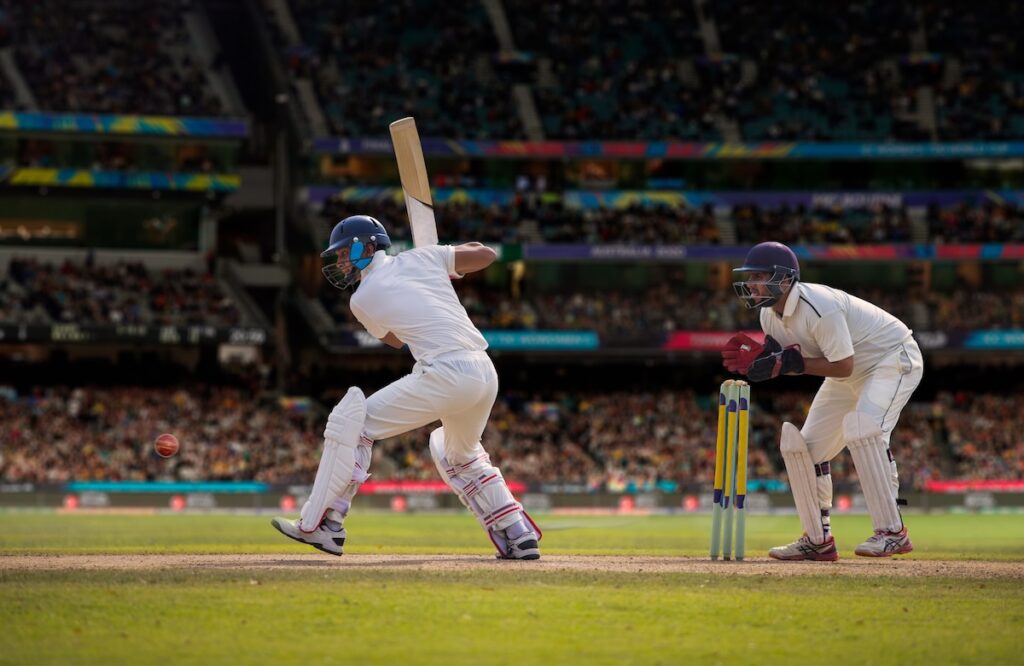
T20 cricket is unforgiving.
You have fewer balls, less time to settle, and every mistake is amplified. It’s a format where one over can decide the match — and consistency is brutally hard to maintain.
Yet even here, some players stand out not just for their strike rates or highlight reels, but for how often they deliver.
Top 10 T20 International Batters of All Time (by Runs 2025)
| Player | Innings | Runs | Average | 50+ per 10 inns | 100s per 10 inns | % Innings 50+ |
|---|---|---|---|---|---|---|
| Rohit Sharma (IND) | 151 | 4231 | 32.05 | 2.45 | 0.33 | 24.5% |
| Babar Azam (PAK) | 121 | 4223 | 39.84 | 3.22 | 0.25 | 32.2% |
| Virat Kohli (IND) | 117 | 4188 | 48.70 | 3.33 | 0.09 | 33.3% |
| Jos Buttler (ENG) | 126 | 3700 | 35.92 | 2.22 | 0.08 | 22.2% |
| Paul Stirling (IRE) | 148 | 3669 | 26.78 | 1.69 | 0.07 | 16.9% |
| Martin Guptill (NZ) | 118 | 3531 | 31.81 | 1.86 | 0.17 | 18.6% |
| Mohammad Rizwan (PAK) | 93 | 3414 | 47.42 | 3.33 | 0.11 | 33.3% |
| David Warner (AUS) | 110 | 3277 | 33.43 | 2.64 | 0.09 | 26.4% |
| Aaron Finch (AUS) | 103 | 3120 | 34.28 | 2.04 | 0.19 | 20.4% |
| Virandeep Singh (MAS) | 92 | 2769 | 36.92 | 2.17 | 0.11 | 21.7% |
Kohli and Rizwan are the outliers.
They don’t just survive this chaotic format — they master it.
Both average over 47. Both score 50+ in a third of their innings — far higher than anyone else on the list.
And they do it with calm heads in high-pressure chases and powerplays.
In a format built for risk, Kohli and Rizwan are built for reliability.
Babar Azam is right there too — slightly behind in frequency, but higher in century rate. His consistency is often underrated.
Everyone else? Solid, explosive, or impactful in bursts… but not in the same class when it comes to consistency.
Even players like Rohit Sharma and David Warner — both elite in white-ball formats — average 2.5 or fewer fifty-plus scores per 10 innings.
And their century rates in T20Is are minimal — just 0.33 and 0.09, respectively.
The lesson?
In T20s, scoring 50+ even twice every 10 innings is very good. Do it three times, like Kohli or Rizwan? You’re elite. Anything more than that? Unheard of.
So if you’re playing T20 cricket at club level — don’t expect to score big every time. Your job is to maximise impact when it’s your day — and understand that even the best fail more often than they fire.
What Club Cricketers Get Wrong

We’ve looked at the numbers from the best players in the world.
We’ve seen that even elite batters fail more often than they succeed, but succeed often enough to create impact.
Now let’s talk about where things fall apart for most club players.
Because it’s not just technique, it’s not just fitness. It’s a mindset.
Specifically: how they judge their own game.

Have You Downloaded Our FREE 7-Day Gym Workout Plan?
Grab your complete step-by-step 7-day gym workout plan for cricketers today. There will be no more Guesswork. Just follow the plan and get results.
Comparing Yourself to the Wrong Standard
Most club cricketers don’t measure their game.
They justify it.
They remember the good scores. They forget the bad ones. They base their self-worth on a moment — not a pattern.
You’ll hear things like:
- “I made 60 last month, I should be in the firsts.”
- “I got a good nut three games in a row. That’s not my fault.”
- “I just need a bit of luck.”
This is emotional thinking, not performance thinking.
In psychology, we call this confirmation bias — looking for evidence that supports the story you want to believe, and ignoring the rest.
And here’s the truth: One good score doesn’t define your season. Your performance trend does.
Let’s say you’ve had:
- One score of 74
- Four scores in the 20s
- Eight single digits
- Two not-outs on 12 and 15
Most players will cling to the 74 — and convince themselves they’re in form.
But a coach, a selector, or a serious athlete sees the pattern: you’re not converting. You’re inconsistent. You’re unreliable.
That doesn’t mean you’re not talented. But it does mean you’re not ready.
There’s no shame in failing. But if you don’t know why you’re failing—or worse, if you’re avoiding the question altogether—that’s the real issue.
This is where real development begins.
Not in chasing one big knock… but in being honest about:
- How often do you get in?
- What you do get in do you convert?
- Whether you’re contributing to the team, or just surviving
Because confidence built on false evidence isn’t confidence — it’s ego.
And ego collapses under pressure.
True confidence comes from clarity.
And that only comes when you track, reflect, and take ownership of your numbers.
Not to judge yourself, but to grow.
What Do “Good” Batting Averages Look Like in Club Cricket?
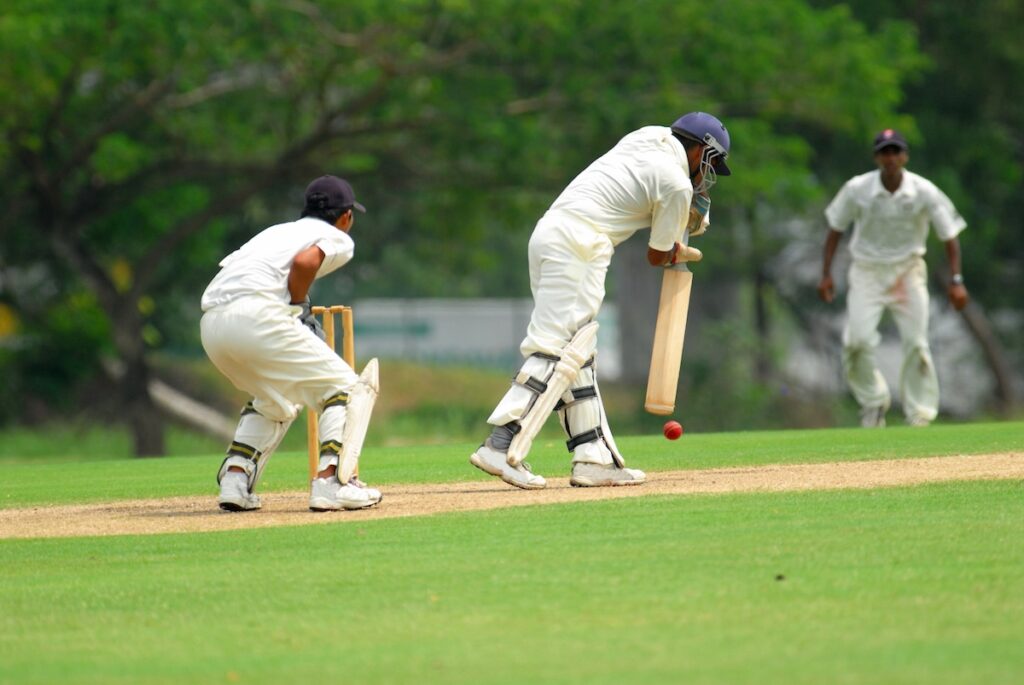
Not every player should be aiming for the same numbers. That’s the first mistake.
- An opener’s job isn’t to bat like Kohli.
- A number six isn’t measured by how many hundreds they score.
- And a number three isn’t judged by intent alone — they’re judged by what they convert.
You must judge yourself against the demands of your role, not the highlight reel in your mind.
Using real data from Premier League teams across the UK, here’s what good batting averages look like over an 18-innings season in 50-over cricket for the top 10 batters in the league:
Good Batting Average Benchmarks for Club Cricketers
| Role | Target Average | 50+ Scores per 10 Innings | 100s per 10 Innings | Total 50+ Scores (18 Inns) | Comments |
|---|---|---|---|---|---|
| Opener | 35–45+ | 2.8–3.5 | 0.8–1.2 | 5–6 | Face new ball, absorb pressure, and build large totals when set |
| No. 3–5 | 40–50+ | 3.0–4.0 | 1.0–1.8 | 6–7 | Anchor innings or accelerate; responsible for conversions |
| No. 6–8 | 25–35+ | 1.5–2.5 | 0.2–0.7 | 3–4 | Impact players: stabilise collapse or finish innings |
| No. 9–11 | 5–15+ | 0–0.5 | 0 | 0–1 | Primarily bowlers; bonus if they can contribute with the bat when needed |
These aren’t guesses. They’re patterns pulled from real top-league players — and adjusted for ambition.
They also tell you something else: if you’re not close to these numbers, it doesn’t mean you’re failing. It means you’ve got something clear to aim for.
And clarity? That’s what changes everything.
Why You Shouldn’t Compare Yourself to the Pros

By now, you’ve seen the benchmarks — clear, role-specific targets grounded in real club-level data.
But here’s the trap:
Most players still look up at the pros and think, “I’m nowhere near those numbers. I must be failing.”
You’re not.
The pro game and the club game are two different beasts.
It’s not just the level of skill — it’s the entire environment. The conditions. The preparation. The support. The expectations.
Let’s break it down:
#1 Pitch Conditions
Pros play on consistently prepared, well-maintained wickets with predictable bounce and pace.
You? You might show up to a cracked slab, a soggy patch, or a green seamer that turns into a dust bowl by 2pm.
The margin for error is smaller, and sometimes the conditions just don’t let you build an innings — no matter how good your intent is.
#2 Limited Opportunities
Most club players only get 15–18 innings per season. A poor run of form, a few unlucky dismissals, or even rain-offs can wreck your stats.
Pros? They’ve got hundreds of innings to ride the wave and find form again.
You’ve got a handful — so every innings carries more emotional weight, even when it shouldn’t.
#3 Inconsistent Opposition
One week you’re facing a county academy quick. The next? A 15-year-old and a part-time leggie who bowls with three different grips.
There’s no rhythm to read. No predictability to plan against. You’re constantly adapting on the fly.
#4 Life Outside Cricket
Pros train, rest, eat, and review — that’s the job. You’re squeezing cricket in between emails, work shifts, family, and Friday-night beers.
You don’t get to warm up like they do. You don’t recover the same way. And your head might still be in a spreadsheet when you take guard.
#5 Short-Term Selection Pressure
In the pro game, a dry spell might see you benched after 8 or 10 innings.In club cricket? Two low scores, and someone’s talking about giving the under-17s a go.
This messes with how you play — because you’re always auditioning, not building.
So What’s the Lesson?
Don’t obsess over pro stats. Don’t measure yourself against televised players with 1,000 reps behind every decision.
Instead, measure yourself against your role, your team’s needs, and your trend over time.
- Are you scoring 50+ when it matters?
- Are you doing your job at number 5?
- Are you giving your team a chance when you open?
- Are you adapting to what the match demands — not what your ego wants?
That’s what makes a valuable player.
That’s what gets you picked. That’s what wins games.
And that’s what growth really looks like.
Are You on Track or Falling Behind as a Club Cricketer?

The numbers don’t judge you. But they do tell the truth.
Every player hits a rough patch. Every batter has dry spells. That’s not the problem.
The problem is when you ignore the signs, explain them away, and keep repeating the same patterns.
This is where honest athletes separate themselves. Not by avoiding failure—but by understanding it.
The Red Flag That Hides in Plain Sight
If you’re scoring fifty or more just once every ten innings—or you’re consistently getting in and not converting—it’s not a blip. It’s a trend.
And trends matter.
This doesn’t mean you’re not talented. But it does mean something is breaking down.
- It could be your technique—something small that lets you down when pressure builds.
- It could be your mental process—losing focus after a good start or chasing too hard.
- It could be your physical preparation, or a lack of recovery week to week.
- Or it could be that you’re simply not tracking your game—so you don’t even realise it’s happening.
This is a common pitfall for many club cricketers. You feel in form. You middle a few in the nets.
You score 28 and think you batted well.
But the numbers don’t lie. They sit there—quietly—asking a better question.
Are you improving, or stalling?
And If You Are on Track?
That’s a great sign. But don’t let that become your ceiling.
Many players ride a couple of early fifties and start believing their own headlines. The intensity slips. The attention to detail fades. The work gets a little easier to skip.
But here’s the better test: What happens when you pass 30?
Do you stay sharp? Build something meaningful? Or chase a flashy shot and walk back early, telling yourself, “I was in.”
When your numbers are strong, it’s easy to become passive. But that’s when growth stops.
Progress isn’t about where you are. It’s about what you’re doing next. You’re either improving or stalling. Stats help you know the difference.
So keep tracking. Keep asking harder questions. And keep raising the standard.
Because the best players don’t just play well, they build something season after season—through clarity, not chance.
What the Numbers Can’t Tell You (But Still Reveal)

Numbers are objective. They’ll show you the trend. They’ll highlight patterns. But they won’t tell you why it’s happening.
That part is on you.
Your job isn’t just to record your stats. It’s to reflect on them with honesty and insight.
Are You Learning From Each Innings?
Every score has a story.
- The 4 you nicked behind chasing a wide one.
- The 28 where you felt in but lost focus.
- The 62 that could’ve been a hundred—if you hadn’t taken your foot off the gas.
The question isn’t just what you scored. The question is: what did you learn?
- Did that low score come from poor shot selection?
- Was it mental—were you distracted, anxious, under pressure?
- Was it physical—tight hips, poor prep, fatigue after a long week?
Your numbers won’t tell you that. But they’ll prompt you to ask.
Because serious players don’t just count runs. They count lessons.
And that’s where growth happens.
When the Game Feels Too Easy — Or Too Hard
There’s another clue numbers quietly give you: when it’s time to change your environment.
If you’re consistently outperforming your peers—scoring 50+ every other week, converting to hundreds, rarely dismissed cheaply—then you may no longer be challenged.
And challenge is where growth lives.
In that case, it might be time to step up a level. Play against better bowlers. Test yourself in harder conditions. Put yourself back into discomfort.
Why? Because comfort kills development.
Equally, if you’re constantly underperforming—fighting to get to 20, rarely batting long, struggling to contribute—it might be time to reset.
Drop down a level, find your rhythm, rebuild your game.
This isn’t failure. It’s smart. You don’t build confidence by drowning. You build it by succeeding in environments where you can grow again.
The best players know when to push up. They also know when to regroup.
Stats won’t tell you how to feel. But they will reveal when it’s time for something different.
So yes—track your numbers. But more importantly, reflect on them. Interrogate them. And use them as a mirror, not a scoreboard.
Because the truth isn’t in the totals.
It’s in how you respond.
Conclusion: Chase Growth, Not Illusion

Every cricketer wants to feel like they’re good enough. Like they belong. Like they’re progressing.
But most chase the wrong signals—one standout score, one selection, one comment from a coach—and cling to it as proof.
Here’s what you now know:
- Even the greats fail more than they succeed.
- Success at club level depends on your role, not a magical number.
- Averages don’t tell the full story—but trends do.
It’s not about one knock. It’s about what you’re doing consistently.
And that’s where the right stats come in. If there’s one thing to take from all this, it’s this:
The Three Stats That Matter Most
| Metric | Why It Matters |
|---|---|
| 50+ Scores per 10 Innings | Shows how often you’re making real, match-impacting runs |
| Conversion Rate to 100s | Tells if you’re capitalising when you get in |
| Runs in Role / Pressure | Measures if you’re delivering when your team truly needs it |
Whether you’re an opener seeing off the new ball or a No. 6 tasked with finishing an innings, these are the markers that matter.
Forget chasing perfection. Forget comparing yourself to the pros.
Measure yourself by:
- Your role
- Your impact
- And your consistency over time
If the numbers say you’re stalling? Time to get to work.
If they say you’re thriving? Maybe it’s time to step up a level.
You don’t have to be perfect. But you do have to be honest.
That’s what turns “just another season” into real progress.
And that’s what separates players who stay stuck… from players who level up.
Further Reading

Have You Downloaded Our FREE 7-Day Gym Workout Plan?
Grab your complete step-by-step 7-day gym workout plan for cricketers today. There will be no more Guesswork. Just follow the plan and get results.
FAQ’s
What Is a Good Batting Average in Club Cricket?
A good batting average in club cricket depends on your role, the format, and the standard of your league—but as a rule of thumb, anything above 35 is considered solid for a top-order batter. For middle-order players, averaging 25–30 while contributing in tough match situations can still be match-winning. What matters more than the raw average, though, is your consistency: how often you pass 50, whether you’re converting starts, and whether your runs come when the team really needs them. One or two big knocks might inflate your average, but real value comes from steady contributions over time.
Is a Batting Average of 30 Good in Club Cricket?
It can be. A batting average of 30 is respectable at most club levels—especially if you’re scoring your runs under pressure or in tricky conditions. But averages don’t tell the full story. Are you scoring 50+ every 3–4 innings? Are you batting in the top five and converting your starts? If you’re consistently making twenties and thirties without pushing on, then an average of 30 might signal missed opportunities. But if you’re in a lower middle order role with fewer overs to work with, 30 could reflect real impact. Context is everything.
How Many Fifties Should a Consistent Batter Score Each Season?
If you’re playing 18 league matches in a season, a consistent batter should be aiming to score fifty or more at least 4 to 6 times. That’s roughly once every three to four innings—exactly what we see from top club-level performers and even professional players over long careers. More important than the number, though, is your conversion: are you building on those fifties and turning them into match-winning hundreds? If you’re getting to 30 regularly but throwing it away, you’re not quite there yet. True consistency is about making those starts count.
How Do I Know If I’m Ready to Move Up a Team in Cricket?
If you’re consistently outperforming your current team’s expectations—scoring runs in tough situations, making 50+ scores every 3–4 innings, and averaging well above your peers—it might be time to step up. Another sign? You’re not being challenged. If bowling attacks start to feel predictable, or you’re getting in and cruising, that’s a cue to test yourself at the next level. Moving up isn’t just about talent—it’s about hunger, mindset, and whether your performances are contributing to wins. When you’re outgrowing your environment, the next step should feel earned, not forced.
What’s the Difference Between Club and Professional Batting Averages?
Professional and club-level batting are two completely different beasts. Pros play on high-quality pitches, face consistent bowling attacks, and get the benefit of full-time preparation and recovery. Club cricketers juggle work, family, and limited match time—often playing on unpredictable wickets and against wildly inconsistent opposition. So while a pro might average 50, that’s not a fair benchmark for a club player. Instead, look at role-specific targets: an opener at club level averaging 35+ with 5–6 fifties in a season is doing an exceptional job. It’s not about matching the pros—it’s about dominating your level.
What’s the Difference Between a Good Batting Average and a Match-Winning Player?
A good batting average suggests consistency. But it doesn’t always mean impact. You could average 35 with a string of tidy 30s, but if none of them change the course of a match, your value stays surface-level. A match-winner, on the other hand, delivers when it matters most—under pressure, against quality attacks, in crunch moments. They might not always be the highest scorer in the league, but their runs come at the right time. That’s a different level of contribution. The takeaway? Don’t just chase runs. Chase meaning.
How Many Games Does It Take to Build a Reliable Batting Average?
Most club players play between 15–20 innings a season. That’s not enough to judge long-term form—but it’s more than enough to spot trends. Patterns typically emerge after 10–12 innings. That’s when you can start seeing if you’re converting starts, how often you’re passing 50, and whether your average is inflated by not-outs or anchored by real contributions. A single season gives you a snapshot. Two or three seasons tell the full story. Track, review, adjust.
Why Do My Club Cricket Averages Fluctuate So Much?
Because club cricket is inconsistent by nature. Conditions change weekly, opposition strength varies, and life outside the game always creeps in—work stress, lack of sleep, dodgy preparation. Throw in rain-affected innings, dodgy umpiring, and the occasional unplayable ball, and you’ve got a volatile mix. That’s why it’s crucial to zoom out. One weekend doesn’t define you. Ten innings might. Twenty definitely do. The more you track, the less you’ll react emotionally—and the smarter you’ll train.



